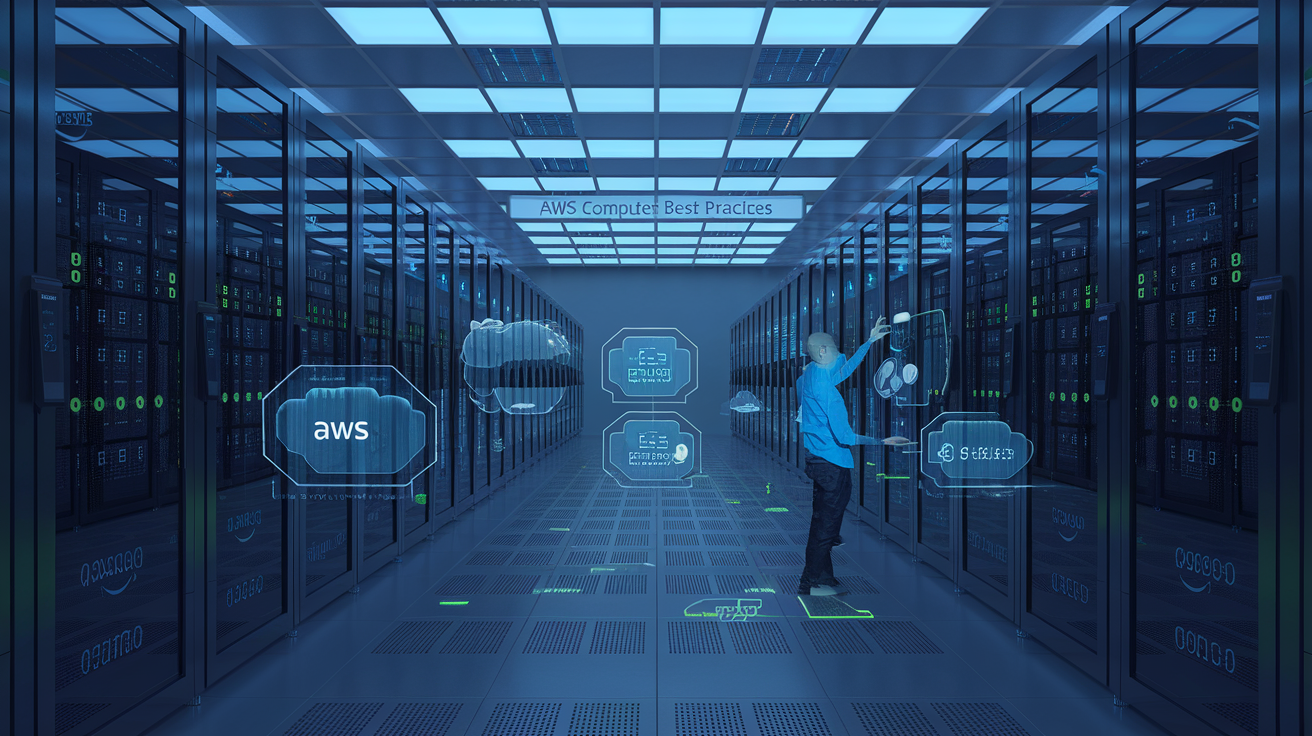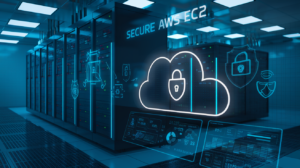Are you feeling overwhelmed by the vast array of AWS compute services? 🤯 You’re not alone. With options like EC2, Lambda, Fargate, ECS, and EKS at your fingertips, choosing the right compute solution for your application can be daunting. But fear not! Implementing these services effectively can be the key to unlocking unprecedented scalability, performance, and cost-efficiency for your cloud infrastructure.
In this comprehensive guide, we’ll dive deep into the best practices for implementing AWS compute services. Whether you’re looking to harness the power of traditional virtual machines with EC2, embrace serverless computing with Lambda, or navigate the world of containerization with Fargate, ECS, and EKS, we’ve got you covered. We’ll explore everything from understanding the nuances of each service to implementing robust security measures and optimizing costs. So, buckle up and get ready to transform your AWS compute strategy! 💪🚀
Let’s embark on this journey by first understanding the landscape of AWS compute services, then we’ll delve into the specifics of each offering, covering crucial aspects like security, monitoring, and cost optimization along the way.
Understanding AWS Compute Services
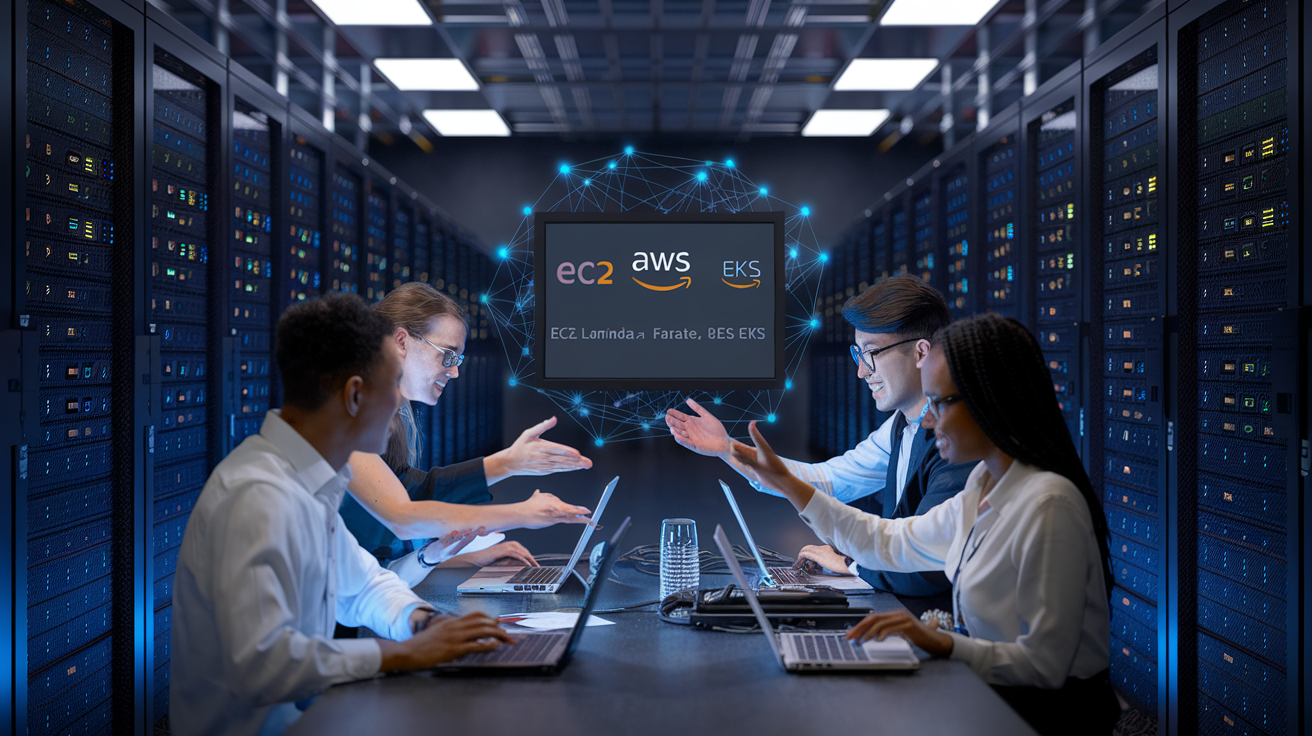
A. Overview of EC2, Lambda, Fargate, ECS, and EKS
AWS offers a diverse range of compute services to cater to various application needs. Let’s explore the key features of each:
-
EC2 (Elastic Compute Cloud):
- Virtual servers in the cloud
- Scalable and flexible
- Suitable for diverse workloads
-
Lambda:
- Serverless compute service
- Event-driven execution
- Pay-per-use pricing model
-
Fargate:
- Serverless container execution
- Eliminates need for server management
- Works with ECS and EKS
-
ECS (Elastic Container Service):
- Container orchestration platform
- Supports Docker containers
- Integrates with other AWS services
-
EKS (Elastic Kubernetes Service):
- Managed Kubernetes service
- Simplifies Kubernetes deployment
- Ensures high availability
B. Comparing features and use cases
| Service | Key Features | Ideal Use Cases |
|---|---|---|
| EC2 | Customizable, full control | Traditional applications, specific OS requirements |
| Lambda | Event-driven, auto-scaling | Microservices, real-time file processing |
| Fargate | Serverless containers | Containerized applications without infrastructure management |
| ECS | Docker support, AWS integration | Containerized applications with deep AWS integration |
| EKS | Kubernetes at scale | Large-scale container orchestration, hybrid deployments |
C. Choosing the right service for your needs
Selecting the appropriate AWS compute service depends on various factors:
- Application architecture
- Scalability requirements
- Operational overhead preferences
- Cost considerations
- Integration needs with other AWS services
Consider your team’s expertise, development practices, and long-term goals when making this decision. For traditional applications requiring full control, EC2 might be the best choice. If you’re building microservices or event-driven applications, Lambda could be ideal. For containerized workloads, choose between Fargate, ECS, or EKS based on your orchestration needs and desired level of control.
EC2 Best Practices

Instance type selection
When selecting EC2 instance types, it’s crucial to match your workload requirements with the appropriate instance characteristics. Consider factors such as CPU, memory, storage, and network performance. Amazon EC2 offers a wide range of instance types optimized for different use cases:
- General Purpose (e.g., T3, M5)
- Compute Optimized (e.g., C5)
- Memory Optimized (e.g., R5)
- Storage Optimized (e.g., I3)
- GPU Instances (e.g., P3)
| Instance Family | Use Case | Key Features |
|---|---|---|
| T3 | Web servers, small databases | Burstable performance |
| M5 | Application servers | Balanced resources |
| C5 | High-performance computing | High CPU-to-memory ratio |
| R5 | Memory-intensive applications | High memory-to-CPU ratio |
| I3 | High I/O workloads | NVMe SSD storage |
Optimizing cost with spot instances
Spot Instances offer significant cost savings, often up to 90% compared to On-Demand prices. Best practices for using Spot Instances include:
- Use for fault-tolerant workloads
- Implement instance diversification
- Set up Spot Fleet for managing multiple instance types
- Use Spot Instance interruption notices
Implementing auto-scaling
Auto Scaling helps maintain application availability and allows you to scale your EC2 capacity up or down automatically according to conditions you define. Key considerations:
- Define appropriate scaling policies (e.g., target tracking, step scaling)
- Use launch templates for consistent configurations
- Implement cool-down periods to avoid rapid scaling events
- Leverage predictive scaling for proactive capacity management
Security best practices
Ensuring EC2 instance security is paramount. Follow these best practices:
- Use Security Groups as a virtual firewall
- Implement least privilege access with IAM roles
- Regularly patch and update instances
- Enable enhanced networking for improved performance and security
- Use encrypted EBS volumes for data at rest protection
Now that we’ve covered EC2 best practices, let’s explore how serverless computing with AWS Lambda can complement your compute strategy.
Serverless with AWS Lambda

Designing efficient Lambda functions
When designing Lambda functions, efficiency is key to optimal performance and cost-effectiveness. Here are some best practices:
- Keep functions focused and small
- Minimize dependencies
- Use environment variables for configuration
- Implement proper error handling
- Optimize for cold starts
Managing cold starts
Cold starts can significantly impact Lambda performance. To mitigate their effects:
- Use Provisioned Concurrency for critical functions
- Implement function warm-up strategies
- Choose the right runtime (e.g., Node.js for faster startup)
| Strategy | Pros | Cons |
|---|---|---|
| Provisioned Concurrency | Eliminates cold starts | Higher cost |
| Warm-up | Cost-effective | Requires additional setup |
| Runtime Selection | No additional cost | Limited language options |
Implementing proper error handling
Robust error handling is crucial for serverless applications. Consider:
- Using try-catch blocks
- Implementing custom error types
- Leveraging AWS X-Ray for tracing
Monitoring and logging strategies
Effective monitoring and logging are essential for maintaining and troubleshooting Lambda functions:
- Utilize CloudWatch Logs
- Set up CloudWatch Alarms
- Implement custom metrics
- Use AWS X-Ray for distributed tracing
By following these best practices, you can create efficient, reliable, and cost-effective serverless applications with AWS Lambda. Next, we’ll explore containerization with Fargate, another powerful compute option in the AWS ecosystem.
Containerization with Fargate
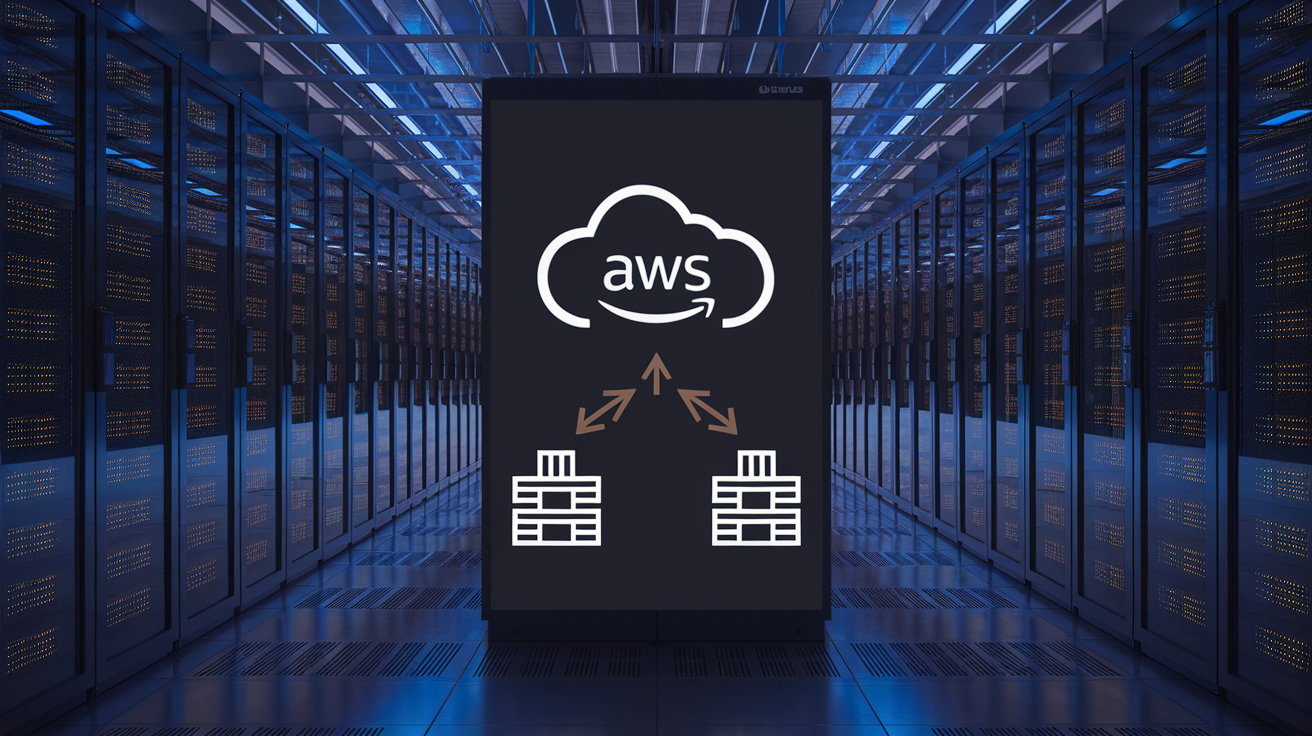
Leveraging Fargate’s serverless container management
AWS Fargate simplifies container management by eliminating the need to provision and manage servers. This serverless approach allows developers to focus on application logic rather than infrastructure maintenance. Fargate automatically handles the underlying infrastructure, scaling, and patching, providing a seamless experience for running containerized applications.
Optimizing container resource allocation
Efficient resource allocation is crucial for maximizing performance and minimizing costs in Fargate. Consider the following best practices:
- Right-sizing containers
- Utilizing task definitions
- Implementing auto-scaling
| Resource | Best Practice |
|---|---|
| CPU | Start with 0.25 vCPU and adjust based on monitoring |
| Memory | Begin with 0.5GB and fine-tune according to application needs |
| Storage | Use ephemeral storage for temporary data |
Implementing service discovery
Service discovery in Fargate enables seamless communication between containerized applications. AWS Cloud Map integration simplifies this process by:
- Automatically registering services
- Providing DNS-based service discovery
- Supporting custom service attributes
Scaling Fargate tasks effectively
To ensure optimal performance and cost-efficiency, implement effective scaling strategies:
- Use Application Auto Scaling for Fargate tasks
- Set up target tracking scaling policies
- Implement step scaling for more granular control
By leveraging these Fargate features and best practices, you can create a robust, scalable, and cost-effective containerized environment. Next, we’ll explore container orchestration with Amazon ECS, which complements Fargate’s capabilities for more complex deployments.
Container Orchestration with ECS
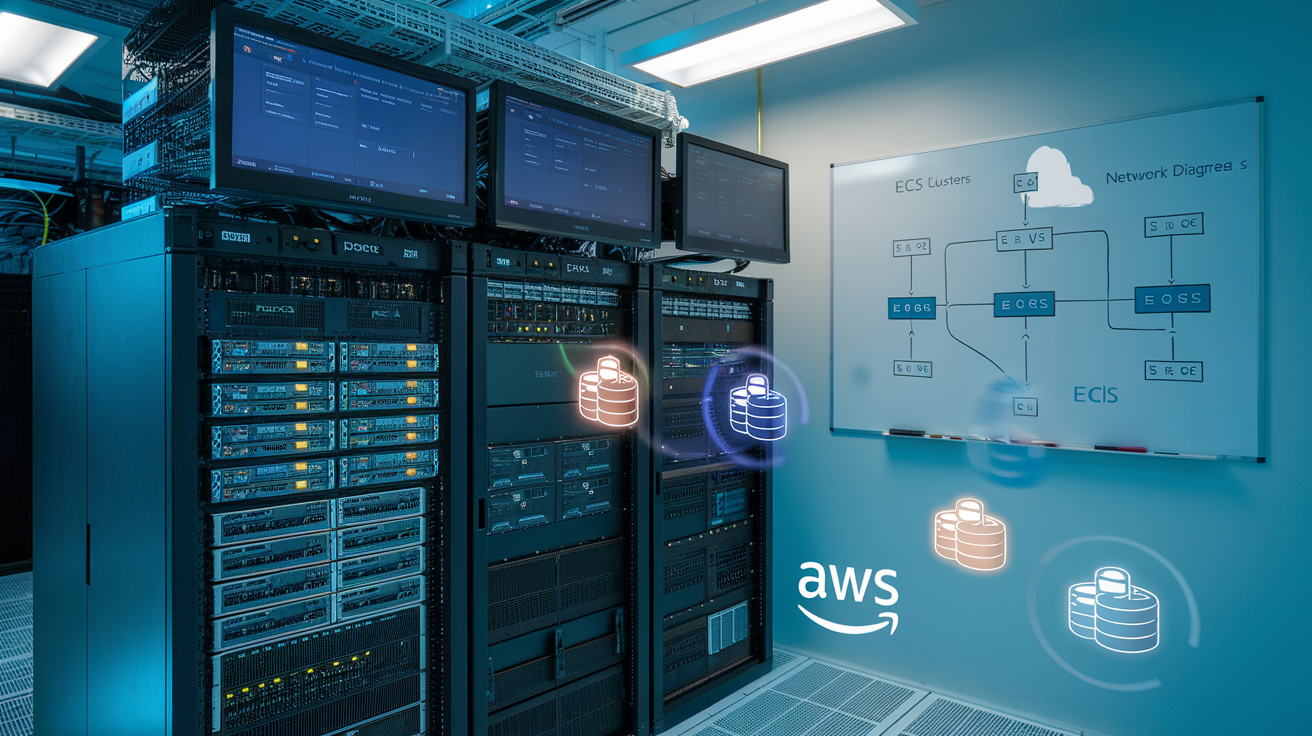
Cluster management best practices
Effective cluster management is crucial for optimal ECS performance. Here are some best practices:
- Use Auto Scaling groups for EC2-backed clusters to maintain desired capacity
- Implement proper tagging for resource organization and cost allocation
- Utilize placement strategies to optimize resource utilization
| Placement Strategy | Use Case |
|---|---|
| Binpack | Minimize the number of instances in use |
| Spread | Distribute tasks evenly across availability zones |
| Random | Suitable for batch processing workloads |
Task definition optimization
Optimizing task definitions can significantly improve your ECS deployments:
- Use the latest task definition revision for up-to-date configurations
- Leverage task networking for enhanced security and performance
- Implement resource-based CPU and memory constraints
- Utilize secrets management for sensitive information
Service scaling and load balancing
Proper scaling and load balancing ensure your ECS services can handle varying workloads:
- Configure Application Load Balancers (ALB) for HTTP/HTTPS traffic distribution
- Implement target tracking scaling policies based on CPU and memory utilization
- Use service discovery for seamless communication between microservices
Implementing blue-green deployments
Blue-green deployments minimize downtime and risk during updates:
- Create a new “green” task definition with updated configurations
- Deploy the green version alongside the existing “blue” version
- Gradually shift traffic from blue to green using ALB target groups
- Monitor the green deployment for any issues
- If successful, terminate the blue version; if not, roll back to blue
By following these best practices, you can effectively orchestrate containers using ECS, ensuring scalability, reliability, and efficient resource utilization. Next, we’ll explore Kubernetes on AWS with EKS, comparing its features and use cases with ECS.
Kubernetes on AWS with EKS
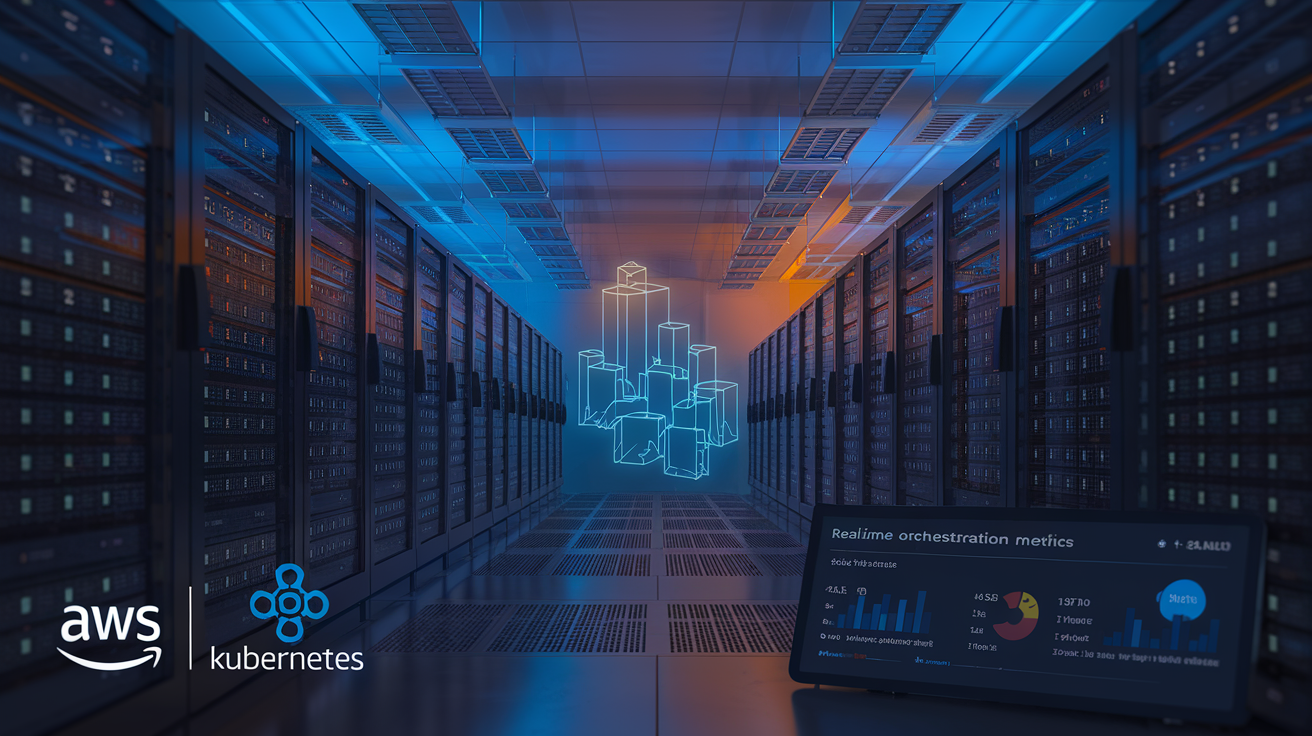
EKS cluster setup and management
Setting up and managing an Amazon EKS cluster requires careful planning and execution. Here are some best practices to ensure a smooth deployment:
- Use eksctl: Utilize the official CLI tool ‘eksctl’ for simplified cluster creation and management.
- Implement proper IAM roles: Assign appropriate IAM roles to your EKS cluster and worker nodes for secure access to AWS resources.
- Enable control plane logging: Activate logging for API server, audit, authenticator, controller manager, and scheduler components.
- Utilize managed node groups: Leverage EKS-managed node groups for easier lifecycle management and automatic updates.
Node group optimization
Optimizing your EKS node groups is crucial for performance and cost-efficiency:
- Use diverse instance types for flexibility
- Implement spot instances for non-critical workloads
- Balance between On-Demand and Spot instances for stability and cost savings
- Leverage GPU-enabled instances for compute-intensive tasks
| Instance Type | Use Case | Pros | Cons |
|---|---|---|---|
| General Purpose | Balanced workloads | Versatile, cost-effective | May lack specialized features |
| Compute Optimized | CPU-intensive tasks | High performance | Higher cost |
| Memory Optimized | Data processing | Large memory capacity | Expensive for non-memory intensive tasks |
| GPU Instances | ML/AI workloads | Accelerated computing | High cost, specialized use |
Implementing autoscaling for pods and nodes
Effective autoscaling ensures optimal resource utilization:
- Horizontal Pod Autoscaler (HPA): Scale pods based on CPU/memory utilization or custom metrics.
- Cluster Autoscaler: Automatically adjust the number of nodes in response to resource demands.
- Vertical Pod Autoscaler: Automatically adjust CPU and memory reservations for pods.
Leveraging EKS add-ons
EKS add-ons enhance cluster functionality:
- Amazon VPC CNI: Provides networking for pods
- CoreDNS: Handles DNS resolution within the cluster
- kube-proxy: Manages network rules for pod communication
- AWS Load Balancer Controller: Integrates with AWS load balancing services
Implement these add-ons to streamline cluster management and improve overall performance. With these best practices in place, you’ll be well-equipped to leverage the full potential of Kubernetes on AWS with EKS. Next, we’ll explore crucial security considerations across various AWS compute services.
Security Considerations Across Compute Services

IAM role configuration
When it comes to securing AWS compute services, proper IAM role configuration is crucial. Here’s a breakdown of best practices:
-
Least Privilege Principle:
- Assign minimal permissions required for the task
- Regularly review and revise permissions
- Use AWS-managed policies when possible
-
Temporary Credentials:
- Utilize IAM roles instead of long-term access keys
- Implement role assumption for cross-account access
-
Role Separation:
- Create distinct roles for different services and functions
- Avoid using a single role for multiple purposes
| Role Type | Example Use Case | Best Practice |
|---|---|---|
| EC2 Instance Role | Accessing S3 buckets | Attach role directly to EC2 instance |
| Lambda Execution Role | Invoking other AWS services | Create specific role for each Lambda function |
| ECS Task Role | Accessing DynamoDB tables | Assign unique role to each task definition |
| EKS Pod IAM Role | Interacting with AWS services | Use IRSA (IAM Roles for Service Accounts) |
Network security with VPCs and security groups
Implementing robust network security is essential for protecting your AWS compute resources. Key considerations include:
-
VPC Design:
- Implement multi-tier architecture with public and private subnets
- Use Network ACLs for subnet-level traffic control
- Enable VPC Flow Logs for network traffic analysis
-
Security Group Configuration:
- Follow the principle of least privilege
- Use specific IP ranges or security group references instead of open access (0.0.0.0/0)
- Regularly audit and update security group rules
-
VPC Endpoints:
- Utilize VPC endpoints for secure communication with AWS services
- Implement endpoint policies to control access
Encryption at rest and in transit
Protecting data through encryption is a critical aspect of AWS compute security:
-
Encryption at Rest:
- Enable EBS encryption for EC2 instances
- Use KMS-managed keys for Lambda environment variables
- Enable encryption for ECS task volumes and EKS persistent volumes
-
Encryption in Transit:
- Use TLS/SSL for all external communications
- Implement VPN or AWS Direct Connect for secure connectivity to on-premises networks
- Enable in-transit encryption for ECS task-to-task communication
| Service | Encryption at Rest | Encryption in Transit |
|---|---|---|
| EC2 | EBS encryption | TLS for application traffic |
| Lambda | KMS for environment variables | HTTPS API endpoints |
| Fargate | Encrypted task volumes | TLS for container-to-container communication |
| ECS | Encrypted data volumes | TLS for service discovery |
| EKS | Encrypted persistent volumes | mTLS for pod-to-pod traffic |
Compliance and auditing
Ensuring compliance and maintaining a robust audit trail are essential for AWS compute security:
-
AWS Config:
- Enable AWS Config to track resource configurations
- Set up Config Rules to enforce compliance policies
-
CloudTrail:
- Enable CloudTrail across all regions
- Use CloudTrail Insights for anomaly detection
-
Compliance Frameworks:
- Leverage AWS Artifact for compliance reports
- Implement controls based on relevant standards (e.g., HIPAA, PCI DSS, GDPR)
-
Regular Audits:
- Conduct periodic security assessments
- Use AWS Security Hub for centralized security management
By implementing these security measures across your AWS compute services, you can significantly enhance your overall security posture. Remember that security is an ongoing process, requiring regular reviews and updates to stay ahead of evolving threats. In the next section, we’ll explore effective strategies for monitoring and observability of your AWS compute resources.
Monitoring and Observability

Leveraging CloudWatch for metrics and logs
CloudWatch is the cornerstone of monitoring in AWS, providing comprehensive insights into your compute resources. It collects and tracks metrics, logs, and events, offering a unified view of your AWS infrastructure.
Key features of CloudWatch:
- Automatic metrics collection for EC2, Lambda, and container services
- Custom metrics for application-specific monitoring
- Log aggregation and analysis
- Dashboards for visualizing metrics and logs
Here’s a comparison of CloudWatch metrics across different compute services:
| Service | Default Metrics | Custom Metrics | Log Integration |
|---|---|---|---|
| EC2 | CPU, Network, Disk | Yes | Yes |
| Lambda | Invocations, Duration, Errors | Yes | Yes |
| Fargate | CPU, Memory, Network | Yes | Yes |
| ECS | CPU, Memory, Network | Yes | Yes |
| EKS | Cluster-level metrics | Yes | Yes |
Implementing distributed tracing
Distributed tracing is crucial for understanding request flows across microservices. AWS X-Ray provides end-to-end tracing capabilities, helping you identify performance bottlenecks and troubleshoot issues.
To implement distributed tracing:
- Instrument your applications with X-Ray SDK
- Configure sampling rules
- Analyze trace data in the X-Ray console
Setting up effective alerting
Proactive alerting is essential for maintaining system health. CloudWatch Alarms allow you to set thresholds on metrics and trigger actions when breached.
Best practices for alerting:
- Set meaningful thresholds based on historical data
- Use composite alarms for complex conditions
- Integrate with SNS for notifications
- Implement escalation policies for critical alerts
Performance optimization strategies
Optimizing performance requires continuous monitoring and analysis. Use CloudWatch Insights to query logs and identify patterns. Leverage AWS Compute Optimizer for EC2 instance recommendations based on utilization data.
Now that we’ve covered monitoring and observability, let’s explore cost optimization techniques to ensure efficient resource utilization across your AWS compute services.
Cost Optimization Techniques

A. Right-sizing resources
When it comes to cost optimization in AWS compute services, right-sizing resources is a crucial strategy. This involves selecting the most appropriate instance types and sizes for your workloads. To achieve this, consider the following best practices:
- Analyze resource utilization
- Choose appropriate instance families
- Implement regular review cycles
Here’s a comparison of different EC2 instance families and their use cases:
| Instance Family | Use Case | CPU | Memory | Storage |
|---|---|---|---|---|
| T3 | General purpose, burstable | Low to Moderate | Moderate | EBS |
| M5 | General purpose | Balanced | Balanced | EBS |
| C5 | Compute optimized | High | Moderate | EBS |
| R5 | Memory optimized | Moderate | High | EBS |
| I3 | Storage optimized | High | High | NVMe SSD |
B. Implementing auto-scaling policies
Auto-scaling is a powerful tool for optimizing costs by automatically adjusting the number of compute resources based on demand. To implement effective auto-scaling policies:
- Set appropriate scaling metrics (e.g., CPU utilization, request count)
- Define target values for scaling actions
- Configure cooldown periods to prevent rapid scaling oscillations
- Use step scaling for more granular control
C. Utilizing reserved instances and savings plans
Reserved Instances (RIs) and Savings Plans offer significant discounts compared to on-demand pricing. To maximize savings:
- Analyze historical usage patterns
- Choose the right commitment term (1 or 3 years)
- Consider a mix of RIs and Savings Plans for flexibility
- Regularly review and modify reservations as needed
D. Monitoring and controlling costs with AWS Cost Explorer
AWS Cost Explorer provides valuable insights into your AWS spending. Use it to:
- Identify cost drivers and trends
- Set up custom reports and alerts
- Forecast future costs based on historical data
- Analyze potential savings from RIs or Savings Plans
By implementing these cost optimization techniques, you can significantly reduce your AWS compute expenses while maintaining performance and scalability. Remember to regularly review and adjust your strategies as your workloads and requirements evolve.
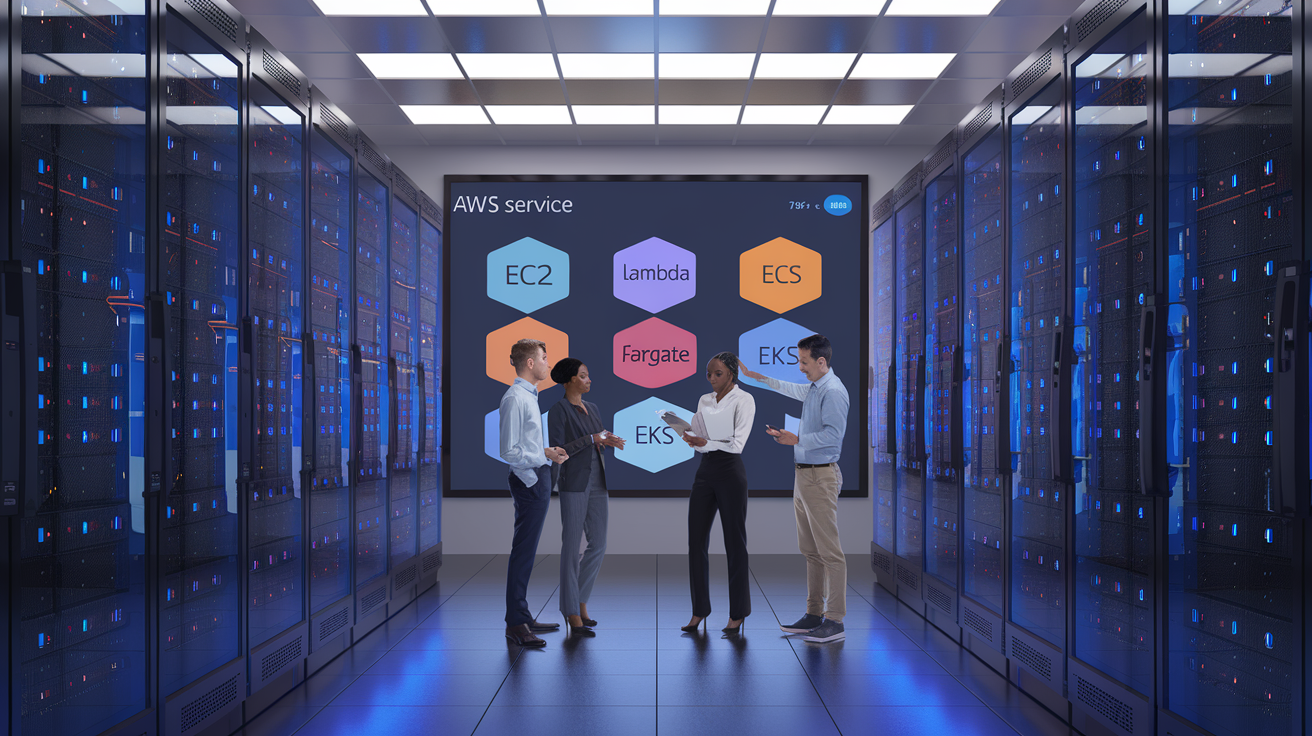
Choosing the right AWS compute service and implementing it effectively is crucial for optimizing your cloud infrastructure. Whether you opt for EC2 instances, serverless functions with Lambda, containerization with Fargate, or container orchestration using ECS or EKS, following best practices ensures optimal performance, security, and cost-efficiency. By implementing robust security measures, leveraging monitoring and observability tools, and applying cost optimization techniques, you can create a resilient and scalable compute environment tailored to your specific needs.
As you embark on your AWS compute journey, remember that there’s no one-size-fits-all solution. Evaluate your application requirements, scalability needs, and operational preferences to determine the most suitable compute service or combination of services. Stay informed about the latest AWS updates and continuously refine your implementation strategies to maximize the benefits of cloud computing for your organization.










